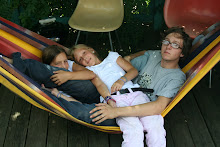It seems to me that Mateo has defined a process which has worked for him in the past. I find it hard to believe that he would recommend or has ever strictly followed the readings fairly closed prescription to the 'problem' of architecture. I began the reading having been warned by fellow students and decided to pick out a statement from which I might be able to inform my early design processes.
"Ideas are necessary, but the less they imply a specific form the more useful they are"
I have always been one for adopting a strategy early on, which involves a great understanding of the regional and local environment, and emphasizes the use of available technologies, to best inform my design. I find that employing passive and active systems, which often address energy efficiency and human productivity I am indeed implying a specific form, and allows me to focus on the more pertinent task at hand; designing the building not the form.
To be recognized however is the effectiveness of this statement when we (as architects) attempt to address and identify, something which has never been defined before. Allowing furniture to be defined in terms of anthorpometrics, ergonomics, and use, but not take on a specific form will be extremely important for my understanding of both the object and how it can be integrated with architecture.
Monday, August 31, 2009
Beyond the chair… Blurring the line between furniture and architecture in home design leads to a new generation of innovation
Understanding furniture as a basis for understanding design: focus on home
3 approaches
• Furniture as catalyst for architecture
• Architecture as catalyst for furniture
• The critical integration of furniture and space
Architects to study: Eames, Saarinen, Jacobson, Wegner, FLW, Rietveld, Bauhaus, Gropius et al, Prouve, Hoffman, Breuer, Macintosh, Le Corbusier, Aalto, also Greg Chang suitcase house, Bill Hisel z box.
Precedents that are off subject: not about objects, Not about distrust of peoples taste, not about image making, even if fun… Oldenberg, Starck, Gehry
Place-making furniture of interest: multi-functional walls, storage, daybed, bench/couch, kitchen elements, chair, lighting, fireplace… working from the lifestyle and possessions of an individual or a pair.
The wisdom of the object: multi-functionality, affordability, manufacturability, detail is king, understanding scale and anthropometrics, material efficiency, commonality of needs and necessities.
& Beyond the object: place and time variations, ergonomics beyond anthropometrics, shifting scales, sustainability
Precedent studies for inspiration and for setting goals for a visionary residence that blurs the line between furniture and architecture.
Goals:http://sowby.com/projectpages/furn/thesis.html
An early vision:
The bento box becoming the summer cottage, protective, unfolding, expanding, accommodating, compartmentalizing, understanding the building as a kit of parts, beyond necessities to ergonomics and functional invention, contextual, regional.
Furniture as waste disappears, replaced space as furniture that is mobile and highly crafted, valued.
the integration of furniture and architecture creates a new paradigm.
Furnitecture –
Not the right word yet…. Since I Stumbled upon Stephen D Ritchings sdrdesign@yahoo.com definition
fur*ni*tec*ture, n. 1. the science, art, or profession of designing and constructing furniture; see ARCHITECTURE. 2. furniture which refers to, is related to, derives from, or is intended to accompany, architecture. 3. furniture which mimics, imitates, or (God forbid) mocks architecture. 4. furniture made of architectural materials, or of recognizable substitutions thereof. 5. furniture which creates an architecture. 6. furniture which attempts to create an architecture. 7. architecture made of, or from, furniture.
http://www.flickr.com/photos/14287804@N07/sets/72157602332868541/
http://course.jingpinke.com/wenxue/jiajusheji/ppt/10/07.pdf
3 approaches
• Furniture as catalyst for architecture
• Architecture as catalyst for furniture
• The critical integration of furniture and space
Architects to study: Eames, Saarinen, Jacobson, Wegner, FLW, Rietveld, Bauhaus, Gropius et al, Prouve, Hoffman, Breuer, Macintosh, Le Corbusier, Aalto, also Greg Chang suitcase house, Bill Hisel z box.
Precedents that are off subject: not about objects, Not about distrust of peoples taste, not about image making, even if fun… Oldenberg, Starck, Gehry
Place-making furniture of interest: multi-functional walls, storage, daybed, bench/couch, kitchen elements, chair, lighting, fireplace… working from the lifestyle and possessions of an individual or a pair.
The wisdom of the object: multi-functionality, affordability, manufacturability, detail is king, understanding scale and anthropometrics, material efficiency, commonality of needs and necessities.
& Beyond the object: place and time variations, ergonomics beyond anthropometrics, shifting scales, sustainability
Precedent studies for inspiration and for setting goals for a visionary residence that blurs the line between furniture and architecture.
Goals:http://sowby.com/projectpages/furn/thesis.html
An early vision:
The bento box becoming the summer cottage, protective, unfolding, expanding, accommodating, compartmentalizing, understanding the building as a kit of parts, beyond necessities to ergonomics and functional invention, contextual, regional.
Furniture as waste disappears, replaced space as furniture that is mobile and highly crafted, valued.
the integration of furniture and architecture creates a new paradigm.
Furnitecture –
Not the right word yet…. Since I Stumbled upon Stephen D Ritchings sdrdesign@yahoo.com definition
fur*ni*tec*ture, n. 1. the science, art, or profession of designing and constructing furniture; see ARCHITECTURE. 2. furniture which refers to, is related to, derives from, or is intended to accompany, architecture. 3. furniture which mimics, imitates, or (God forbid) mocks architecture. 4. furniture made of architectural materials, or of recognizable substitutions thereof. 5. furniture which creates an architecture. 6. furniture which attempts to create an architecture. 7. architecture made of, or from, furniture.
http://www.flickr.com/photos/14287804@N07/sets/72157602332868541/
http://course.jingpinke.com/wenxue/jiajusheji/ppt/10/07.pdf
Subscribe to:
Comments (Atom)
